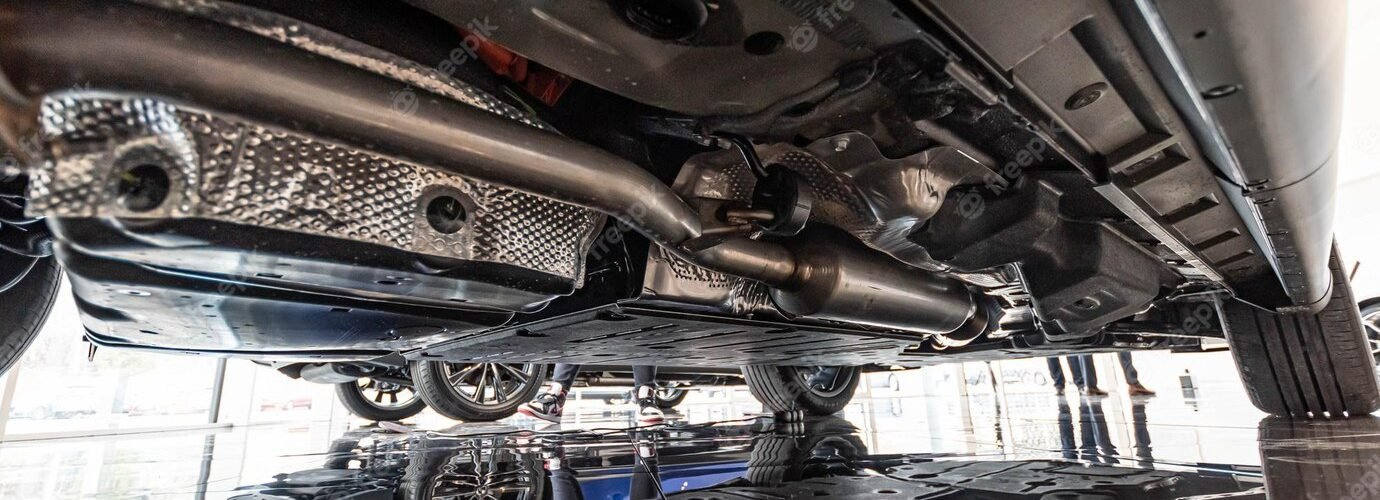Modifying your car’s exhaust system can unlock performance gains and an improved auditory experience, but removing components like resonators risks making your vehicle obnoxiously loud. With careful planning and strategic modifications, you can ditch your resonators without becoming a nuisance.
Table of Contents
What is a Resonator?
The resonator is a crucial part of a car’s exhaust system. It’s specifically designed to lessen the noise created by the engine’s exhaust gases.
You can think of a resonator as a tuned pipe. Its design consists of chambers or baffles that create specific sound waves to cancel out certain frequencies, making the exhaust sound less harsh.
This essential device is typically located after the catalytic converter in the exhaust system. Its position helps target and eliminate the noise right as it begins to travel down the exhaust pipes.
The construction of a resonator varies depending on the vehicle’s needs. It may be made of steel or other materials that can withstand the high temperatures and pressures found in the exhaust system.
So, how does it reduce noise? The resonator uses its carefully engineered structure to create sound waves that interfere with and cancel out the unwanted noise frequencies.
Resonator Delete Effects
Removing the resonator can lead to a noticeable increase in volume and drone. Drivers seeking a louder, more aggressive sound may opt for this change, though it’s not for everyone.
The change in exhaust tone after a resonator delete is quite profound. It offers a more raw and distinct sound, revealing the engine’s character. Some find it thrilling, others overwhelming.
Using an exhaust delete kit, it’s possible to remove the resonator. This is often a decision driven by personal preference to alter the vehicle’s audible expression rather than functionality.
Minimal power gains are another effect of a resonator delete. While some claim noticeable improvements, the evidence often shows only a slight increase in horsepower. It’s more about sound.

Considerations Before Deleting
Examining your existing exhaust setup is key. Knowing the components’ type and state helps decide if a resonator delete would suit your vehicle.
The design of your muffler plays a crucial role as well. Since the resonator and muffler both influence sound, you must understand how they interact. Removing the resonator may affect muffler performance.
Engine size also has a bearing on the decision. Larger engines might produce an overpowering noise if the resonator is removed, while smaller engines might achieve the desired effect.
If your power goals are minimal, the resonator delete may be an option. But remember, significant power gains aren’t usually achieved with this modification. It’s more about sound changes.
Pipe Design Modifications
Gentle bends in the exhaust system can promote a smoother flow of gases. This seemingly minor modification can actually help in enhancing the vehicle’s overall performance and efficiency.
The use of a larger diameter pipe, specifically a 4 inch muffler delete pipe, can aid in reducing back pressure. This enables the engine to exhale more freely, contributing to a more robust sound and potentially improved power.
High-flow mufflers are another consideration in modifying pipe design. These allow more gases to pass through, creating a more aggressive sound. It’s a tweak for those wanting to make a statement.
Resonated tips offer a way to refine exhaust noise. They can balance the sound, avoiding overly harsh or annoying tones. Consideration of this detail shows a thoughtful approach to modification.
Easy Listening Exhaust Tips
Oversize or angled exhaust tips can change the direction and dispersion of sound. They create a particular visual appeal and may alter the sound to match a driver’s preference.
Turned-down exhaust tips direct the sound and gases toward the ground. This subtle modification can surprisingly affect how the exhaust noise is heard, creating a more muted effect.
Resonated tips come with built-in resonators controlling sound frequency. They’re helpful for those looking to refine the exhaust note without making significant changes to the entire system.
Chambered exhaust tips feature internal chambers that affect sound waves. They can create a deep, muscular tone that appeals to those who prefer a classic, throaty engine roar.
When considering these exhaust tips, compatibility is key. They must align with your vehicle’s existing exhaust setup. A mismatch can lead to unexpected results or even damage.

When to Reconsider Loudness
Long trips with a loud exhaust system might prove tiresome. The continuous roar may begin as exciting but could turn into a source of fatigue or even a headache.
Highway driving also calls for reconsideration. The constant high speeds mean the exhaust noise may become monotonous and overwhelming. It’s a scenario where loud isn’t always lovely.
In neighborhoods, an excessively loud exhaust system might not be welcome. The sound can disturb others, causing discomfort or annoyance. Being mindful of those around you is essential.
During early or late hours, noise sensitivity increases. People are usually resting, and a loud exhaust can disrupt their peace. It’s a time when quiet is generally preferred.
It’s not just about comfort; laws might enforce noise limits. Some areas have regulations concerning vehicle noise levels at different times or places. Falling afoul of these laws could lead to fines.
Conclusion
Modifying your car’s exhaust system to achieve the desired sound can be both satisfying and challenging. Finding the right balance ensures that your vehicle’s new roar or purr aligns with both personal taste and societal considerations.
The journey from resonators to custom exhaust tips offers exciting possibilities, but caution and awareness must guide the way.





